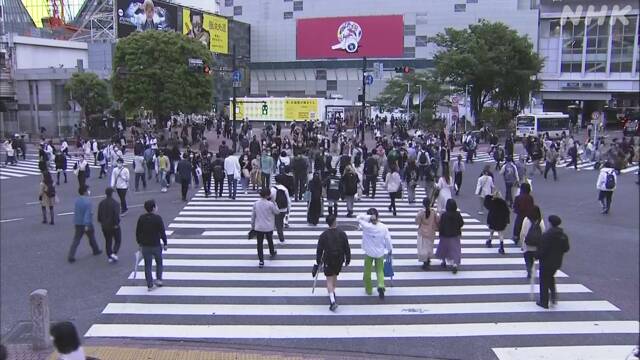On the 5th, the last day of the Golden Week holidays, the number of people at major locations in Tokyo, Osaka, Hyogo, and Kyoto, where the third state of emergency was declared, has decreased from the time of the second declaration. However, it is more than double that of last year's first declaration.
NHK has issued a third state of emergency in Tokyo, where the IT-related company "Agoop" has issued a third state of emergency using mobile phone location information data collected in a form that does not identify individuals with the permission of the user. We analyzed the number of people in major locations in Osaka, Hyogo, and Kyoto.
The time analyzed is from 6 am to 6 pm during the day and from 6 pm to midnight the next day at night.
According to this, the number of people on the 5th, which was the last day of the Golden Week holidays, was lower than the average of Saturdays, Sundays, and holidays during the period when the second declaration was issued.
The
rate of
decrease is
▽ 8% during the day and 6% at night near Tokyo Station ▽
23% during the day and at night near the Shibuya Scramble intersection
▽ 58% during the day and 54% at night near Osaka Umeda Station
▽ Kobe City 33% during the day and 32% at night near Sannomiya Station
▽ 24% during the day and 22% at night near Kyoto Station.
On the other hand, it has more than doubled compared to the average of Saturdays, Sundays, and holidays during the period when the first declaration was issued last year.
The rate of increase is
▽ 172% (about 2.7 times) during the day and 170% (about 2.7 times) at night near Tokyo Station ▽
121% (about 2.2 times) during the day and 148% (about 2.2 times) at night near the Shibuya Scramble intersection. Approximately 2.5 times)
▽ 180% (approximately 2.8 times) during the day near Umeda Station in Osaka, 194% (approximately 2.9 times) at night
▽ 170% (approximately 2.7 times) during the day near Sannomiya Station in Kobe City, at night 193% (about 2.9 times)
▽ In the vicinity of Kyoto Station, it was 214% (about 3.1 times) during the day and 224% (about 3.2 times) at night.

